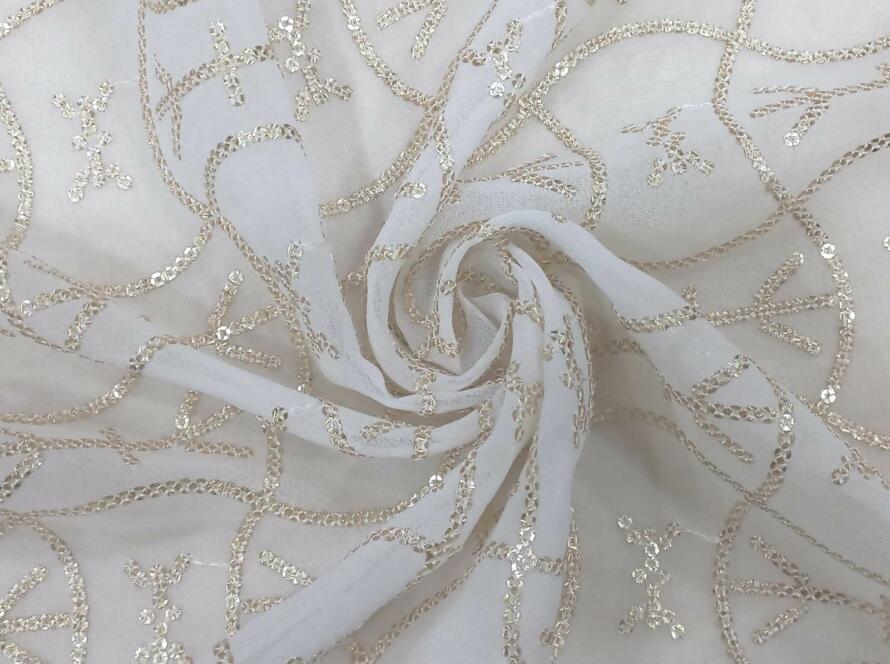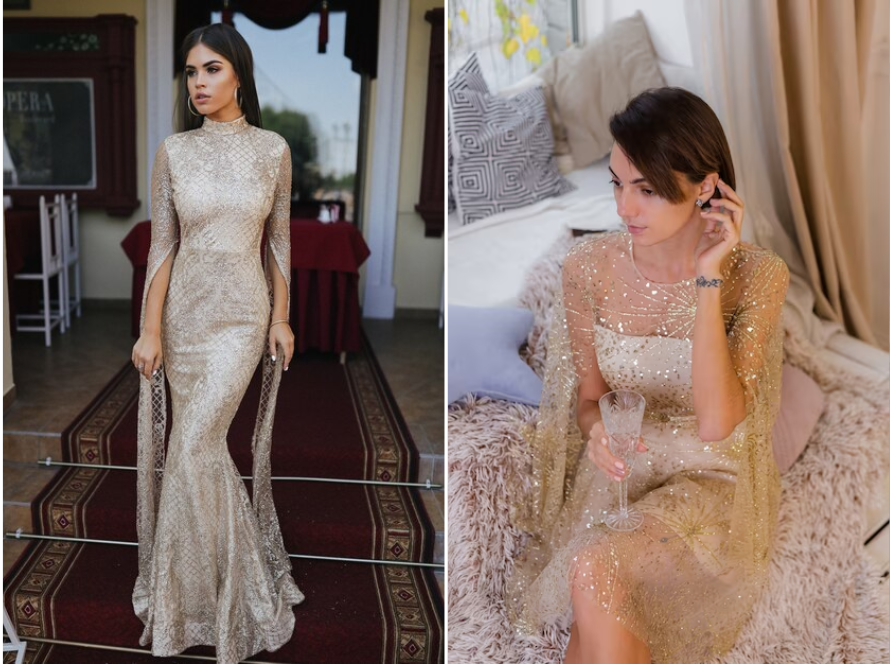Venkatagiri saris, once the epitome of opulence and grace in Telugu royalty, are experiencing a resurgence in the contemporary fashion world.
These exquisite saris, known for their lightweight elegance and intricate craftsmanship, have a history deeply rooted in the royal courts of Andhra Pradesh.
The Royal Revival: Venkatagiri Saris Reemerge in Modern Fashion
Today, they are making a strong comeback, capturing the attention of designers, celebrities, and fashion enthusiasts alike.
A Glimpse into the Royal Past
The origin of Venkatagiri saris can be traced back to the 18th century when they were first woven for the royal families of Venkatagiri, a small town in the Nellore district of Andhra Pradesh. These saris were traditionally woven with the finest cotton, often adorned with zari (gold or silver threads) to create intricate patterns that symbolized wealth and status. The delicate weaving techniques, passed down through generations, ensured that each sari was a masterpiece, fit for royalty.
The Modern Revival
In recent years, Venkatagiri saris have found new admirers in the fashion industry. Designers are reinterpreting these traditional weaves by incorporating contemporary motifs and colors, making them more appealing to younger audiences. The saris are now available in a variety of styles, from traditional handwoven patterns to modern digital prints, catering to a wide range of preferences.
What sets Venkatagiri saris apart is their versatility. Despite their rich heritage, these saris are incredibly lightweight and comfortable, making them ideal for both casual and formal occasions. The use of fine cotton and silk ensures that the saris drape beautifully, enhancing the wearer’s elegance.
Embracing Sustainability
The revival of Venkatagiri saris is also part of a larger movement towards sustainable fashion. As consumers become more conscious of the environmental impact of fast fashion, there is a growing appreciation for handcrafted, eco-friendly textiles. Venkatagiri saris, with their natural fibers and traditional weaving methods, perfectly align with this shift towards sustainability.
Madhav Fashion, one of the largest embroidery fabric manufacturers in Asia, has always been a strong supporter of Indian fashion. Their commitment to promoting traditional textiles and crafts has played a significant role in the revival of many Indian fabrics, including Venkatagiri saris. By choosing Venkatagiri saris, fashion enthusiasts are not only embracing a piece of history but also supporting the artisans who keep this ancient craft alive. Many of these weavers work in small, family-run workshops, where the art of weaving is both a livelihood and a cultural legacy. The renewed interest in Venkatagiri saris has provided a much-needed boost to these artisans, helping to preserve their craft for future generations.
Celebrities and Cultural Influence
The resurgence of Venkatagiri saris has also been fueled by celebrities and influencers who are seen sporting these regal weaves at high-profile events. From Bollywood stars to international fashion icons, many have embraced the timeless charm of Venkatagiri saris, showcasing their beauty on red carpets and social media platforms. This exposure has played a significant role in bringing these saris back into the spotlight.
A Timeless Classic
The modern revival of Venkatagiri saris is a testament to the enduring appeal of traditional Indian textiles. As they continue to captivate new audiences with their elegance and heritage, Venkatagiri saris are not just a nod to the past but a symbol of timeless style and sustainability. With the support of brands like Madhav Fashion, which has always championed Indian fashion, these saris stand as a reminder of the rich cultural heritage of India, offering a piece of royalty that can be cherished for generations to come.
___________________________________________
What are Venkatagiri saris, and why are they considered special?
Venkatagiri saris are traditional handwoven saris originating from the town of Venkatagiri in the Nellore district of Andhra Pradesh, India. These saris are renowned for their lightweight feel, intricate designs, and fine craftsmanship. Historically, they were woven exclusively for the royal families of Venkatagiri, making them a symbol of luxury and opulence.
The uniqueness of Venkatagiri saris lies in their delicate yet durable weave, often embellished with zari (gold or silver threads) that create intricate patterns reflecting the region’s rich cultural heritage. These saris are typically made from the finest cotton or silk, ensuring comfort and elegance.
The traditional motifs, which often include peacocks, swans, and other nature-inspired designs, are a testament to the artisans’ skill and creativity. Despite their royal origins, Venkatagiri saris have evolved over time and are now available in a variety of styles, catering to modern tastes while maintaining their traditional charm. Their versatility, comfort, and timeless appeal make them a treasured addition to any wardrobe, suitable for both casual and formal occasions.
How has the modern revival of Venkatagiri saris impacted the fashion industry?
The modern revival of Venkatagiri saris has had a significant impact on the fashion industry, bringing traditional Indian textiles back into the spotlight. This resurgence is part of a broader movement towards embracing sustainable and handcrafted fashion, as consumers increasingly seek out products that are not only beautiful but also eco-friendly and ethically made. Designers have played a crucial role in this revival by reinterpreting traditional Venkatagiri weaves with contemporary motifs, colors, and styles, making them appealing to a younger and more diverse audience.
This fusion of tradition and modernity has made Venkatagiri saris a popular choice for fashion-conscious individuals who value both heritage and innovation. The revival has also had a positive economic impact, providing much-needed support to the artisans who have been preserving this ancient craft for generations. By purchasing Venkatagiri saris, consumers are helping to sustain these weavers’ livelihoods and ensure the continuation of this rich cultural tradition. As a result, Venkatagiri saris have not only regained their status as a symbol of luxury but have also become a statement of conscious fashion.
How is Madhav Fashion contributing to the revival of Venkatagiri saris?
Madhav Fashion, one of the largest embroidery fabric manufacturers in Asia, has played a pivotal role in the revival of Venkatagiri saris by actively promoting and supporting traditional Indian textiles. Their commitment to preserving India’s rich cultural heritage has led to various initiatives aimed at bringing these age-old crafts to the forefront of modern fashion. Madhav Fashion collaborates with skilled artisans and weavers from Venkatagiri, providing them with the resources and platforms needed to showcase their work on a global scale.
By integrating traditional weaving techniques with contemporary designs, Madhav Fashion has made Venkatagiri saris more accessible and appealing to a broader audience. Additionally, the brand’s emphasis on sustainability aligns with the eco-friendly nature of Venkatagiri saris, further enhancing their appeal in today’s conscious fashion market. Through these efforts, Madhav Fashion not only helps in preserving the art of Venkatagiri weaving but also ensures that the artisans receive fair compensation and recognition for their craft. This support has been instrumental in revitalizing the demand for Venkatagiri saris, making them a cherished and fashionable choice once again.
What makes Venkatagiri saris a sustainable fashion choice?
Venkatagiri saris are an excellent example of sustainable fashion due to their use of natural materials, traditional handweaving techniques, and the support they provide to local artisans. These saris are typically made from high-quality cotton or silk, which are both biodegradable and eco-friendly fibers. The natural dyeing processes often used in their production further reduce the environmental impact, making them a conscious choice for those looking to reduce their carbon footprint.
The handwoven nature of Venkatagiri saris means that each piece is crafted with care and precision, without the need for mass production or machinery, which can be harmful to the environment. By choosing a Venkatagiri sari, consumers are not only acquiring a beautiful garment but are also supporting the livelihoods of skilled weavers who have been practicing this craft for generations. This support helps to sustain the traditional textile industry, which is an essential part of India’s cultural heritage. In a world increasingly dominated by fast fashion, Venkatagiri saris stand out as a symbol of quality, craftsmanship, and sustainability.
How can one style a Venkatagiri sari for modern occasions?
Styling a Venkatagiri sari for modern occasions involves blending its traditional elegance with contemporary elements to create a look that is both sophisticated and chic. Given the sari’s lightweight nature and intricate designs, it can be effortlessly draped for a variety of settings, from casual day events to formal evening functions. For a more modern twist, you can pair a Venkatagiri sari with a stylish blouse featuring off-shoulder, halter-neck, or even peplum styles.
Accessorizing is key to enhancing the overall look—opt for statement jewelry like bold earrings or a chunky necklace to complement the sari’s delicate motifs. For a more minimalist approach, subtle jewelry can be chosen to let the sari’s craftsmanship take center stage. Footwear also plays an important role; elegant heels or traditional juttis can complete the ensemble, depending on the occasion. Hair can be styled in a sleek bun adorned with flowers for a traditional look, or left open in soft curls for a more contemporary appearance. The versatility of Venkatagiri saris allows them to be adapted to various occasions while maintaining their timeless charm.
What is the cultural significance of the motifs used in Venkatagiri saris?
The motifs used in Venkatagiri saris are rich in cultural significance, reflecting the heritage and traditions of the region. These designs often draw inspiration from nature and mythology, with common motifs including peacocks, swans, and floral patterns. The peacock, a symbol of beauty and grace, is frequently used in Venkatagiri saris to represent elegance and cultural pride. Floral motifs, such as jasmine and lotus, symbolize purity and prosperity, making them popular choices for these saris.
In addition to these, geometric patterns and intricate zari work are also characteristic of Venkatagiri saris, showcasing the weavers’ skill and attention to detail. Each motif tells a story and adds to the sari’s overall narrative, making it not just a piece of clothing but a work of art that carries the legacy of Telugu royalty. The use of these motifs connects the wearer to a rich cultural past, allowing them to carry forward traditions while embracing modern fashion. As Venkatagiri saris continue to evolve, these motifs remain a timeless element that keeps the craft rooted in its cultural origins.
What challenges do artisans face in preserving the tradition of Venkatagiri weaving?
Artisans who practice the traditional craft of Venkatagiri weaving face several challenges in preserving this ancient art form. One of the primary challenges is the declining number of skilled weavers, as younger generations often move away from the craft in search of more lucrative job opportunities in urban areas. This exodus threatens the continuity of the weaving tradition, as fewer artisans are available to pass on their knowledge and skills. Additionally, the high cost of raw materials, such as fine cotton and silk, coupled with the time-intensive nature of handweaving, makes it difficult for weavers to compete with cheaper, mass-produced textiles.
The lack of adequate financial support and recognition further exacerbates these challenges, leaving many artisans struggling to sustain their livelihoods. However, the modern revival of Venkatagiri saris, supported by brands like Madhav Fashion, has brought some relief by increasing demand and providing fair compensation for their work. Despite these efforts, continuous support from consumers, designers, and the government is crucial to ensuring that this rich cultural heritage is preserved for future generations.
How has the global fashion industry responded to the revival of Venkatagiri saris?
The global fashion industry has responded positively to the revival of Venkatagiri saris, recognizing their unique blend of tradition, craftsmanship, and sustainability. As the demand for ethically produced, handcrafted textiles grows, Venkatagiri saris have found a niche market among international designers, fashion enthusiasts, and celebrities. The sari’s lightweight, breathable fabric, coupled with its intricate designs, makes it a versatile garment that appeals to a global audience.
International fashion weeks and exhibitions have showcased Venkatagiri saris, helping to elevate their status as a symbol of luxury and heritage on the world stage. The involvement of celebrities and influencers who wear these saris at high-profile events has further boosted their popularity, making them a sought-after choice for those looking to embrace Indian fashion with a modern twist. Additionally, the global movement towards sustainable fashion has highlighted the importance of supporting traditional crafts, leading to increased interest in Venkatagiri saris. This renewed global appreciation has provided much-needed support to the artisans, ensuring that this ancient craft continues to thrive in the modern fashion landscape.
How do Venkatagiri saris compare to other traditional Indian saris?
Venkatagiri saris hold a unique place among traditional Indian saris, known for their lightweight feel, intricate weaving, and royal heritage. Unlike heavier saris such as Banarasi or Kanjivaram, which are often woven with thick silk and extensive zari work, Venkatagiri saris are typically made from fine cotton or silk, making them more breathable and comfortable to wear, especially in warmer climates. The motifs on Venkatagiri saris, inspired by nature and mythology, are woven with a delicate hand, resulting in a subtle elegance that sets them apart from the more opulent designs of other traditional saris.
While Banarasi and Kanjivaram saris are known for their grandeur and are often worn for weddings and formal occasions, Venkatagiri saris are more versatile, suitable for both everyday wear and special events. The understated luxury of Venkatagiri saris makes them a favorite among those who appreciate intricate craftsmanship without the weight and heaviness associated with other traditional saris. This distinctiveness has contributed to their growing popularity, both in India and internationally, as a symbol of timeless elegance and cultural heritage.
Where can one purchase authentic Venkatagiri saris?
Authentic Venkatagiri saris can be purchased from various sources, both online and offline. One of the best ways to ensure authenticity is to buy directly from the weavers or from government-run handloom outlets, which often have a wide selection of genuine Venkatagiri saris. These outlets support the artisans and provide a platform for them to sell their products at fair prices. Additionally, several well-known brands and boutiques that specialize in traditional Indian textiles also offer authentic Venkatagiri saris, often with a modern twist.
Madhav Fashion, for instance, is a trusted name that collaborates with local weavers to produce high-quality Venkatagiri saris, ensuring that each piece is a genuine representation of this ancient craft. Online platforms, including e-commerce websites that focus on handloom and handcrafted products, are also good options for purchasing authentic Venkatagiri saris. However, it is essential to verify the authenticity of the seller and the product before making a purchase. Reading customer reviews, checking for certifications, and asking questions about the sourcing and production process can help ensure that you are buying a true Venkatagiri sari.






